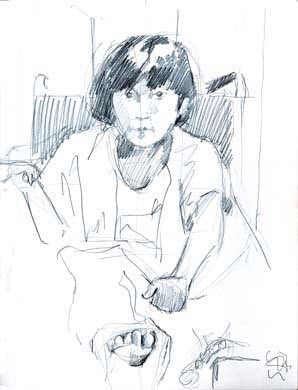- Reaction score
- 5
- Points
- 430
Good point of view, especially the "And was you there Charlie?"
http://www.canada.com/components/print.aspx?id=a21fe40c-759b-4553-9244-52f57e4df3b5
Criticism of airmen is unjust
The Ottawa Citizen
Saturday, March 24, 2007
Re: War and controversy, March 23.
I read with great interest Dean Oliver's opinion article about the controversy over the Bomber Command display and the policies of the Canadian War Museum. It is all very worthy, but he left out one vital element: an offer to change the wording of the disputed panel. That's the crux of this whole affair. This will not end until that issue has been resolved.
The Bomber Boys, including myself, will continue their revolt against the museum's offensive and inaccurate description of Bomber Command's role in the Second World War.
The panel makes three main points: That "the morality and value" of the air offensive both remain contested, and that the campaign had few results until late into the war.
When exactly was that late date? Would it have been around D-Day, June 5, 1944? Before that, Bomber Command had already participated in the fight for air superiority, finally achieved in March and April of 1944. Normandy hinged on this victory.
Six hundred thousand German civilians dead? A useless statement. Bombing was taking place all over Europe -- a major part of the Second World War. The Russians suffered 20 million or more dead.
Was the morality of the bombing campaign contested? Not with the aircrews of Bomber Command. Our main concern was to keep our butts intact and survive. Every trip was a First World War-style "over the top" experience.
Such bombing was introduced by the Luftwaffe against London in the fall of 1940 and every night in the winter of 1941.
Maybe for some regrets are deeply held that it was deemed necessary to carry out the bombing raids in Germany. For the aircrews, though, morality was saved for the postwar years, when the armchair quarterbacks would be free to speak up and criticize our efforts.
Even Albert Speer, the czar of Germany's war industry, wrote of the bombing after the war that had the Allies "continued the attacks of March/April 1944 with the same energy, we quickly would have been at our last gasp."
I believe we can safely surmise that in any big, long, drawn-out war there will be many ifs, ands or buts. But I would hate to have future generations see this panel as an epitaph as it now reads. Because Bomber Command's losses were so terrible, many airmen to this day remain highly sensitive to any unjust criticism. The panel's authors should have realized this.
I am reminded of a popular buzzword of that era. For the benefit of those who so zealously guard the panel's words about our questionable war effort, I will quote it now: "And was you there, Charlie?"
King Finnie, Ottawa
http://www.canada.com/components/print.aspx?id=a21fe40c-759b-4553-9244-52f57e4df3b5
Criticism of airmen is unjust
The Ottawa Citizen
Saturday, March 24, 2007
Re: War and controversy, March 23.
I read with great interest Dean Oliver's opinion article about the controversy over the Bomber Command display and the policies of the Canadian War Museum. It is all very worthy, but he left out one vital element: an offer to change the wording of the disputed panel. That's the crux of this whole affair. This will not end until that issue has been resolved.
The Bomber Boys, including myself, will continue their revolt against the museum's offensive and inaccurate description of Bomber Command's role in the Second World War.
The panel makes three main points: That "the morality and value" of the air offensive both remain contested, and that the campaign had few results until late into the war.
When exactly was that late date? Would it have been around D-Day, June 5, 1944? Before that, Bomber Command had already participated in the fight for air superiority, finally achieved in March and April of 1944. Normandy hinged on this victory.
Six hundred thousand German civilians dead? A useless statement. Bombing was taking place all over Europe -- a major part of the Second World War. The Russians suffered 20 million or more dead.
Was the morality of the bombing campaign contested? Not with the aircrews of Bomber Command. Our main concern was to keep our butts intact and survive. Every trip was a First World War-style "over the top" experience.
Such bombing was introduced by the Luftwaffe against London in the fall of 1940 and every night in the winter of 1941.
Maybe for some regrets are deeply held that it was deemed necessary to carry out the bombing raids in Germany. For the aircrews, though, morality was saved for the postwar years, when the armchair quarterbacks would be free to speak up and criticize our efforts.
Even Albert Speer, the czar of Germany's war industry, wrote of the bombing after the war that had the Allies "continued the attacks of March/April 1944 with the same energy, we quickly would have been at our last gasp."
I believe we can safely surmise that in any big, long, drawn-out war there will be many ifs, ands or buts. But I would hate to have future generations see this panel as an epitaph as it now reads. Because Bomber Command's losses were so terrible, many airmen to this day remain highly sensitive to any unjust criticism. The panel's authors should have realized this.
I am reminded of a popular buzzword of that era. For the benefit of those who so zealously guard the panel's words about our questionable war effort, I will quote it now: "And was you there, Charlie?"
King Finnie, Ottawa





